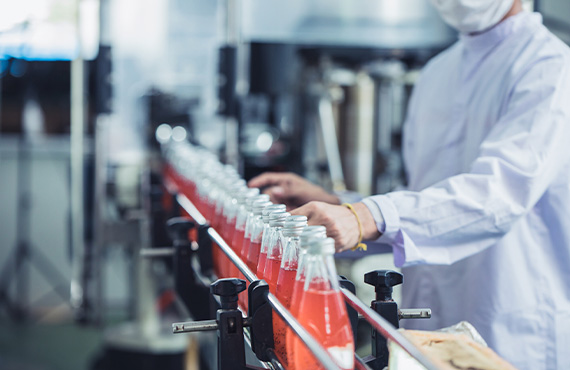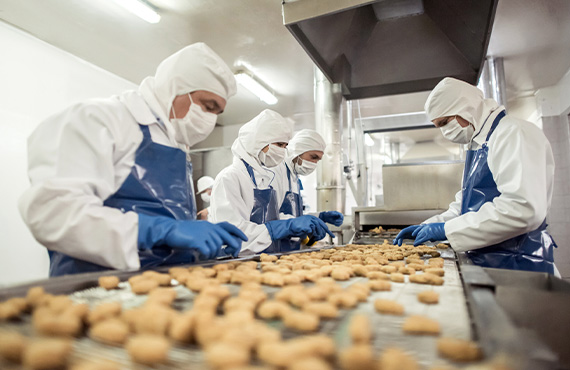
The food and beverage industry may not seem like an obvious target for cyberattacks. Yet, in our increasingly digital world, threats lurk around every corner.
Companies in this industry adopt more connected technologies and operations. This exposes them to more cyber risks. But why should companies in this sector focus on cybersecurity?
The stakes are incredibly high. A breach could endanger consumers. It could violate privacy, disrupt production, and enable theft of ideas. It could also damage the brand. Cyberattacks have already affected big food and beverage corporations. Mondelez is an example. A 2017 attack cost them an estimated $100 million.
This threat is growing. Food and beverage companies must strengthen their cyber defenses now.
Food Safety Risks
The food and beverage industry faces a grave risk of cyber-enabled threats to food safety. Malicious actors could gain remote access to industrial control and safety systems. They could then manipulate processes to contaminate ingredients or products. People must guard against tainting food with cyber means.
Hacking into programmable logic controllers or supervisory control and data acquisition (SCADA) systems could let bad actors change temperatures, pressure, mix ratios, or other critical settings. They could also tamper with operational data to mask quality issues.
Attackers could also compromise industrial and IT systems. They could contaminate ingredients, finished goods, or packaging. This can happen at many points in the supply chain. This is why a strong cybersecurity program is imperative for maintaining food safety and public health.

Data Breaches
Insiders' threats and hacking can cause devastating data breaches. This is a risk for any food and beverage organization. Stealing consumer data, like credit card numbers or personal information, can harm a brand, oftentimes irreversibly. Even more dangerous are breaches.
They result in the theft of secret recipes, formulas, or processes. Losing this type of IP can have dire financial consequences. It can also ruin a company's competitive position. Companies need effective incident response plans to contain data breaches.
Critical Infrastructure
The food and beverage industry relies on long supply chains. They are complex networks for delivering products safely and efficiently. Any disruption to critical infrastructure—like utilities, logistics, or industrial control and safety systems—can have catastrophic effects.
The food and drink sector's infrastructure has become a target for cyber criminals. It is attractive to them. Attacks aim to disrupt operations, gain leverage, or extort companies. They are on the rise.
Bad actors may infiltrate supply chain systems. They do this to reroute deliveries, tamper with orders, or trigger shortages. They could target smart grids and power systems. This would cripple production lines or cold storage.
Most alarming are intrusions into industrial control systems like SCADA. These systems automate processes in food manufacturing and packaging. A breach here could let bad actors change equipment settings. They could also shut down an entire plant. Bad actors can attack vital food and drink infrastructure. There are not always enough safeguards to stop them.

Financial Impact from Cybersecurity Breaches
Cybersecurity breaches can cost the food and beverage industry a lot. They can cause lost revenue, recovery costs, and damage to customer’s/public’s trust in the brand. A successful attack can disrupt operations or steal sensitive data. This can lead to big financial losses.
A cyber attack that halts production can result in hours or days of lost revenue. For a major food processing plant, downtime can quickly cost millions. Recovery and cleanup costs after an incident are often hundreds of thousands or millions. Expenses may include forensic analysis and tech repairs. They may also include legal services, PR, and customer notifications.
A breach can damage a brand's reputation. This includes a breach involving customer data or a food safety incident. This damage can have long-term financial impacts. Loss of consumer trust erodes sales and market value. Studies show that on average, stock prices experience a short-term drop following a cyber breach, typically around 3-5%.
Regulatory violations result in fines and penalties. They come from failures to protect consumer data privacy. They represent more costs. Major security oversights can trigger large fines.
Cybersecurity insurance premiums may rise following an attack. Some policies also require prescribed security measures. Not following them results in denied claims.
They have much at stake financially. So, food and beverage companies must make cybersecurity a top priority.
They must also rank preparedness for responding to incidents. Understanding the costs involved motivates strategic investment in robust IT/OT security.
Food and Beverage Regulatory Compliance
The food and beverage industry is highly regulated. The rules ensure the safety and integrity of the food supply chain. In recent years, regulations have expanded to cover cybersecurity as well. The Food Safety Modernization Act (FSMA) gives the FDA power to:
- Mandate recalls,
- Require safety plans, and
- Order import alerts. It can do this for companies that fail to meet standards.
The Critical Infrastructure Protection Act aims to secure critical infrastructure. This includes things like food and agriculture. It mandates that covered entities identify cyber risks. They must also perform assessments and put in place security programs.
The Cybersecurity Framework is from the National Institute of Standards and Technology. It gives voluntary guidance and best practices. They are for managing cybersecurity risks in all sectors.
International standards, like ISO 27001 and IEC 62443, relate to information security. They also cover industrial automation solutions.
Many retailers and suppliers now need third-party audits and certifications. Businesses need these cybersecurity-related tools to operate effectively. For example, in 2020, the Global Food Safety Initiative added cybersecurity to its requirements.
Staying current with rules and standards is key for food and beverage companies. They must follow regulatory requirements and compliance standards. They are also essential for quality and due diligence across the industry.
Assessing Vulnerabilities with Audits and Risk Assessments
Understanding vulnerabilities in your existing systems is critical for any cybersecurity program. Thorough security audits and risk assessments cover your OT and IT cybersecurity environments. They show weak points and opportunities for compromise.
Regular audits and risk assessments should examine factors like:
- Testing how the network divides its architecture. Look at network traffic flows, remote access, Wi-Fi, and links to outside partners.
- Identity and access management. It involves reviewing how authentication works. Also, how account privileges, password policies, and physical access controls work.
- Cataloging all software applications and services. Rank them by criticality and check for vulnerabilities.
- Data flows. You map how data moves between systems. You verify the right encryption and access controls.
- Historical audits to compare progress. They show security improvements over time.
You need to verify that you meet compliance requirements. Industry regulations and standards, like NIST, ISO, IEC, NERC, CFATS, and HIPAA, set these requirements. It should include information on new attack techniques, attackers, and vulnerabilities.
Further, regular audits and assessments provide key insights. They show where cyber risks exist and how to address them. Using expert guidance can help find and rank vulnerabilities. This is true even in complex environments.
Protective Measures
Food and beverage companies can take several key steps to strengthen their ICS and OT cybersecurity solutions:
- Implement network security controls. Secure networks and their edges with firewalls. Also, use intrusion detection systems, VPNs, and network segmentation. Control access between IT and OT networks.
- Manage user access - Use role-based access controls and multi-factor authentication. Restrict user privileges and track access.
- Secure endpoints. They need strong passwords and encrypted devices. Also, they need anti-malware tools and prompt vulnerability patches.
- Protect data - Classify sensitive data and regulate access. Encrypt data in transit and at rest. Backup critical data offline.
- Harden OT systems. Disable unneeded ports and services. Use application whitelisting and industrial VPNs. Isolate legacy systems.
- Check continuously. Log events, monitor networks and systems, scan for vulnerabilities, and analyze threats.
- Test defenses - Conduct penetration tests, red team exercises, and disaster recovery drills. Identify and address gaps.
- Formalize policies - Develop comprehensive cybersecurity policies and procedures aligned to standards. Provide cybersecurity training.
Response Planning
Having strong incident response and disaster recovery plans is crucial. They help you detect, respond to, and recover from a cyber attack. This involves setting procedures and policies for security incident reporting. It covers triage, containment, eradication, and recovery.
Key elements of response planning include:
- Assembling an incident response team with defined roles and responsibilities. Include IT security, OT engineers, legal counsel, PR, and executives.
- Developing playbooks for common attack scenarios with step-by-step procedures. Test these plans with simulation exercises.
- Preparing disaster recovery plans to restore systems from backups after an attack. Test backups and recovery procedures. Test for servers, workstations, remote sites, and control systems.
- Establishing backup production or business plans. They keep operations going if the main systems are unavailable. Identify manual workarounds.
- Conducting post-incident assessments to identify security gaps and improve future response efforts. Update policies, controls, and staff training as needed.
Maintain Vigilance with Proconex
Cybersecurity requires ongoing diligence to stay ahead of emerging threats. Keeping security top of mind organization-wide is essential. Cyber threats evolve. So, food and beverage businesses must keep adapting. You must adapt your defenses, skills, and readiness to respond.
Let the experts here at Proconex be your leaders in food and beverage ICS and OT cybersecurity solutions! Contact us today for a free quote.
